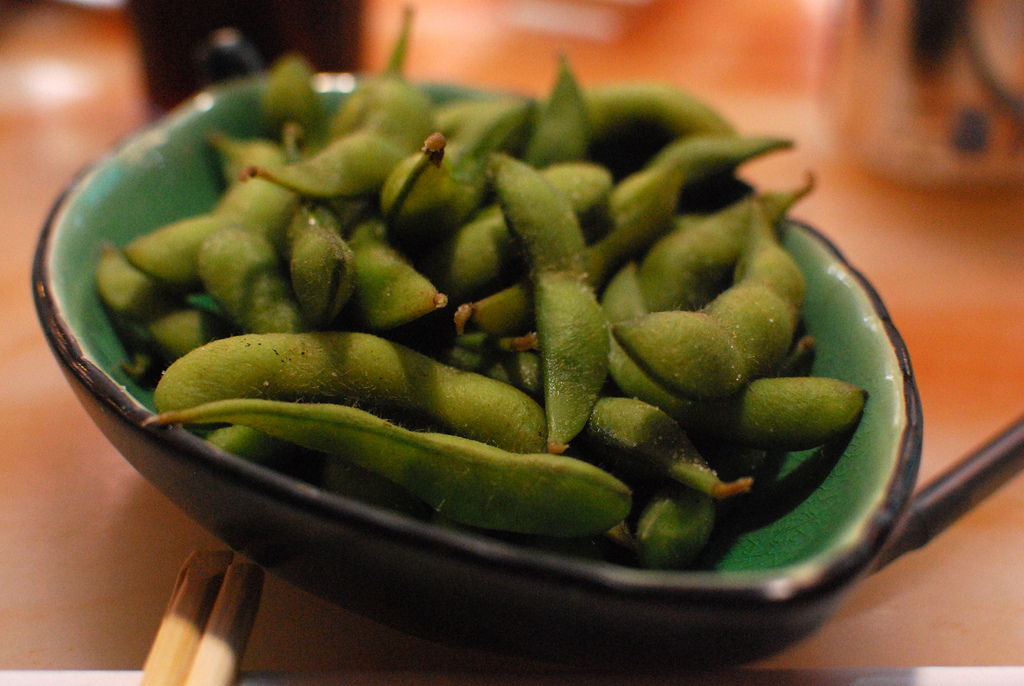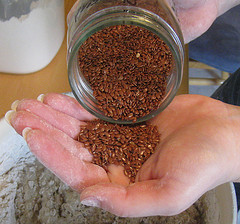 Got asthma or allergies? Eating soy beans and flax seeds may help, according to research presented at the 2014 conference of the American Academy of Allergy, Asthma, & Immunology.
Got asthma or allergies? Eating soy beans and flax seeds may help, according to research presented at the 2014 conference of the American Academy of Allergy, Asthma, & Immunology.
Jessica Savage, MD, from Harvard Medical School, showed that phytoestrogens found in soy beans and flax seeds were tied to a decreased risk of asthma and allergies. Although more research is needed to confirm the results, the research suggests that flax, soy, and probiotics may play an important role in attenuating allergic conditions.
Phytoestrogens are compounds found in plants that act on some of the same receptors as estrogen. Earlier research has suggested the phytoestrogens have anti-inflammatory and anti-oxidant properties that may reduce inflammation. Animal studies have shown that phytoestrogens in soy beans decreased allergic airway inflammation in animals.
Dr. Savage sought to see whether the phytoestrogens would have similar effects in humans. She and her team studied 2, 218 people involved in the National Health and Nutrition Examination Survey (NHANES). The data included an analysis of urinary levels of phytoestrogens, serum samples, body measurements, smoking history, and spirometry results. They also measured substances produced by the intestinal bacteria when phytoestrogens are metabolized, including enterolactone, daidzein, genistein, O-desmethylangolensin (O-DMA), and equol. These metabolites help to track levels of phytoestrogens in the body.
 Patients with the highest levels of the metabolite enterolactone had a 19% reduced risk of asthma compared to patients with the least amount of enterolactone. Those who had the highest daidzein levels were 29% less likely to suffer from atopy.
Patients with the highest levels of the metabolite enterolactone had a 19% reduced risk of asthma compared to patients with the least amount of enterolactone. Those who had the highest daidzein levels were 29% less likely to suffer from atopy.
Previous studies have also shown that taking antibiotics may limit the production of these metabolites. This suggests the possibility that taking probiotics could also affect asthma and allergies.
These findings add to growing research on the role of nutrition in fighting asthma and allergies. A study published last year showed that vitamin D levels could also affect asthma symptoms. If you’re looking for a way to use nutrition to fight asthma and allergies, chiropractic can help. In addition to providing nutritional advice, chiropractors can use chiropractic adjustments to relieve any spinal or nervous system dysfunctions that could be contributing to your symptoms. Studies suggest that manual therapies may help in the management of upper respiratory conditions in children.
Edamame soy bean photo by Slgckgc and flax seed photo by Dvortygirl via Creative Commons
References
American Academy of Allergy, Asthma & Immunology (AAAAI) 2014: Abstract 566. Presented March 1, 2014.
Harrison Laird. Flax seeds, soy beans may help asthma and allergy. Medscape Medical News. March 3, 2014.
Pepinoa VC, et al. Manual therapy for childhood respiratory disease: A systematic review. Journal of Manipulative and Physiological Therapeutics 2013; 36(1): 57-65.

